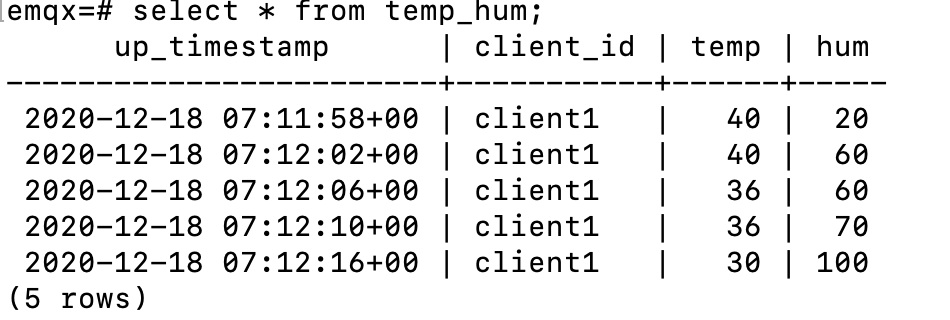Integrate with TimescaleDB
In this article, we will simulate temperature and humidity data and report these data to EMQX Cloud via the MQTT protocol and then use the EMQX Cloud Data Integrations to dump the data into TimescaleDB.
Before you start, you will need to complete the following:
- A deployment (EMQX Cluster) has been created on EMQX Cloud.
- For Professional Plan users: Please complete Peering Connection Creation first, all IPs mentioned below refer to the internal network IP of the resource.(Professional Plan with a NAT gateway can also use public IP to connect to resources).
- For BYOC Plan users: Please establish a peering connection between the VPC where BYOC is deployed and the VPC where the resources are located. All IPs mentioned below refer to the internal IP of the resources. If you need to access the resources via public IP addresses, please configure a NAT gateway in your public cloud console for the VPC where BYOC is deployed.
TimescaleDB Configuration
Install TimescaleDB
bashdocker run -d --name timescaledb -p 5432:5432 -e POSTGRES_PASSWORD=password timescale/timescaledb:1.7.4-pg12Create database
bashdocker exec -it timescaledb psql -U postgres CREATE database emqx; \c emqxCreate table
Use the following SQL statement to create
temp_humtable. This table will be used to save the temperature and humidity data reported by devices.sqlCREATE TABLE temp_hum ( up_timestamp TIMESTAMPTZ NOT NULL, client_id TEXT NOT NULL, temp DOUBLE PRECISION NULL, hum DOUBLE PRECISION NULL ); SELECT create_hypertable('temp_hum', 'up_timestamp');Insert test data and view it
sqlINSERT INTO temp_hum(up_timestamp, client_id, temp, hum) VALUES (to_timestamp(1603963414), 'temp_hum-001', 19.1, 55); SELECT * FROM temp_hum;
Data Integrations Configuration
Go to Deployment Details and click on Data Integrations on the left menu bar.
Create TimescaleDB Resource
Click on
TimescaleDBunder the Data Persistence.
Fill in the timescaledb database information you have just created and click
Test. If there is an error, you should check if the database configuration is correct. Then click onNewto create TimescaleDB resource.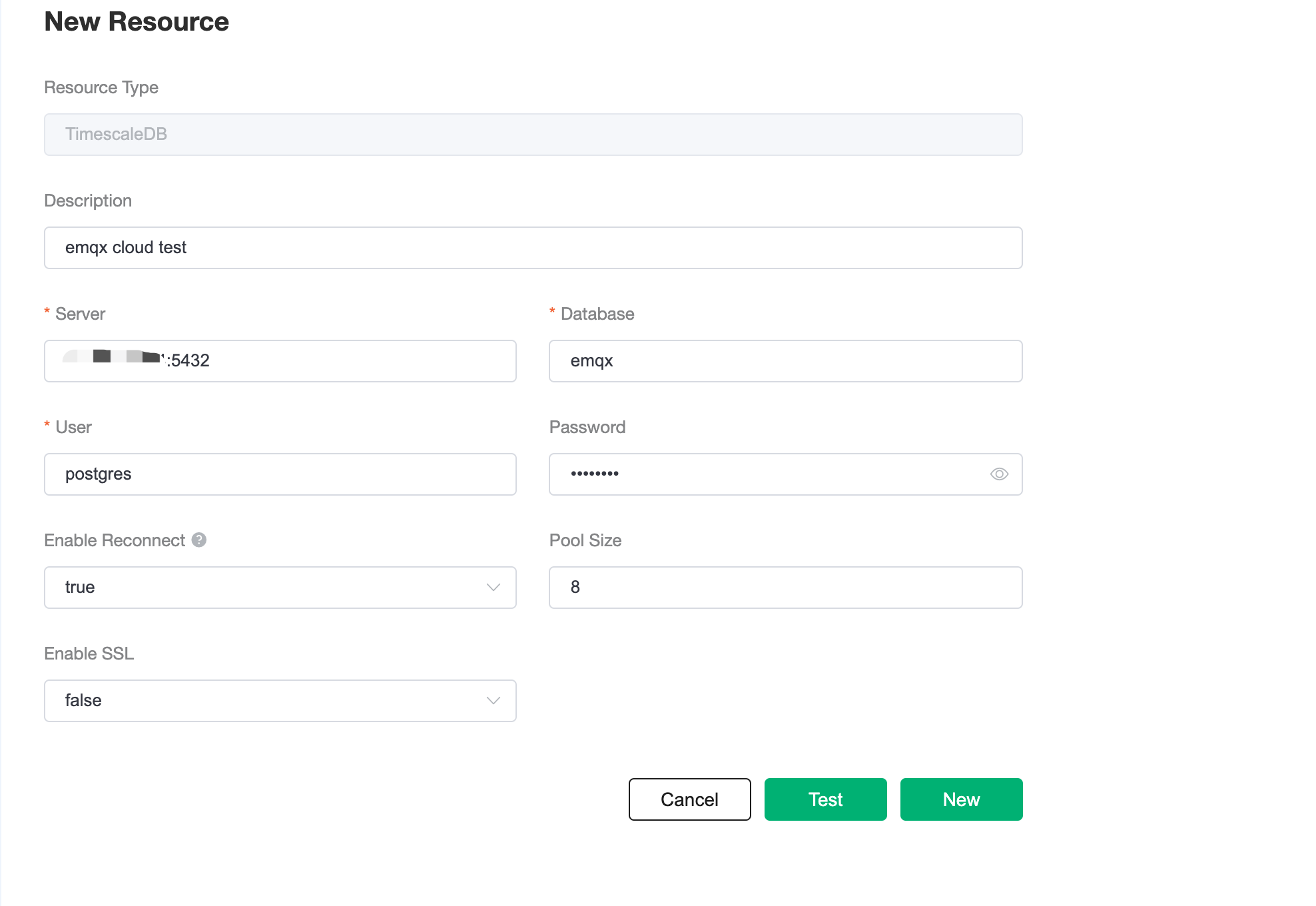
Create Rule
Choose the TimescaleDB resource under Configured Resources, click on
New Ruleand enter the following rule to match the SQL statement. In the following rule we read the timeup_timestampwhen the message is reported, the client ID, the message body (Payload) from thetemp_hum/emqxtopic and the temperature and humidity from the message body respectively.sqlSELECT timestamp div 1000 AS up_timestamp, clientid AS client_id, payload.temp AS temp, payload.hum AS hum FROM "temp_hum/emqx"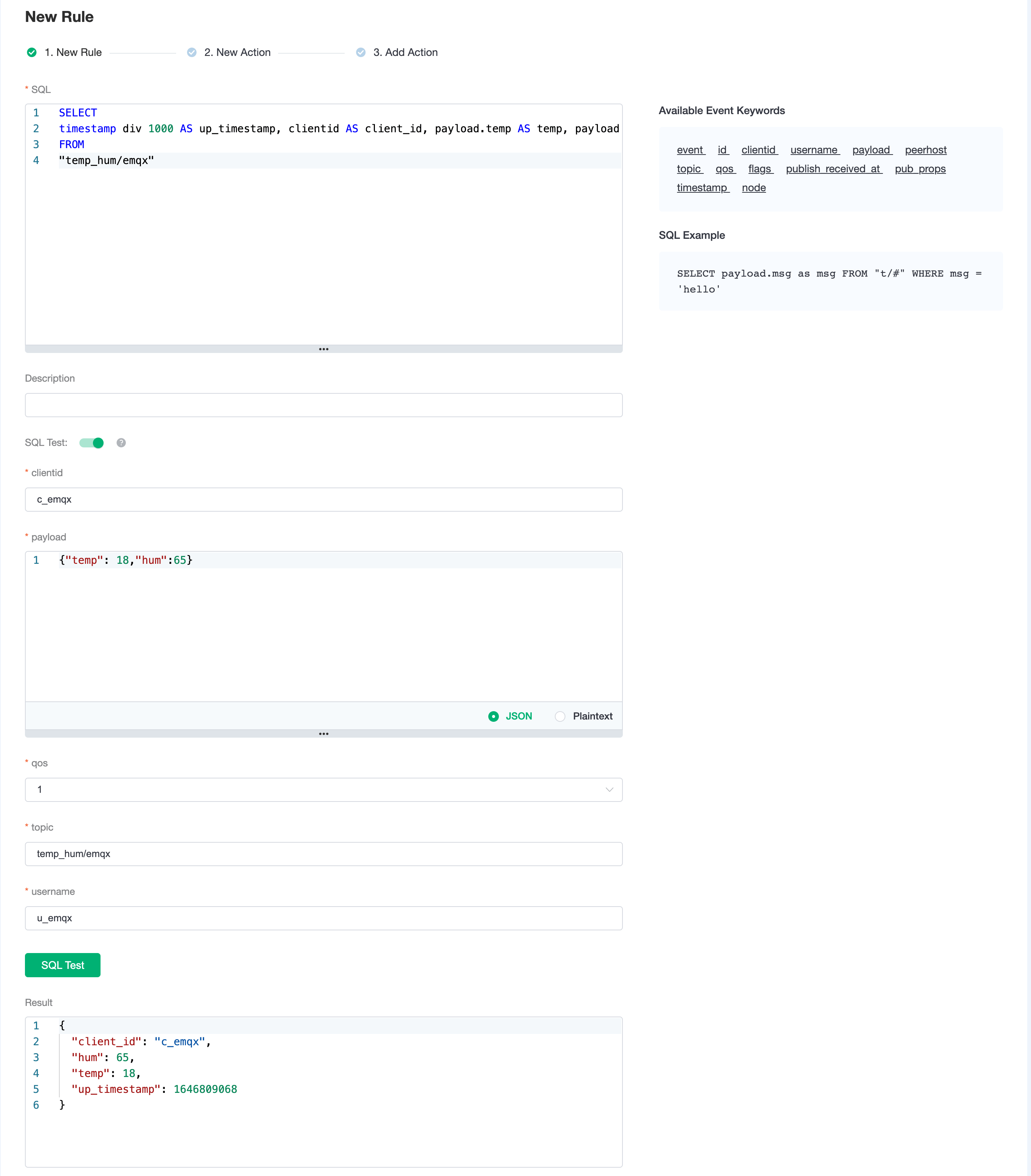
Create Action
Click on the
Nextbutton in the bottom to enter action view. Select the resource created in the first step and enter the following data to insert into the SQL template.sqlINSERT INTO temp_hum(up_timestamp, client_id, temp, hum) VALUES (to_timestamp(${up_timestamp}), ${client_id}, ${temp}, ${hum})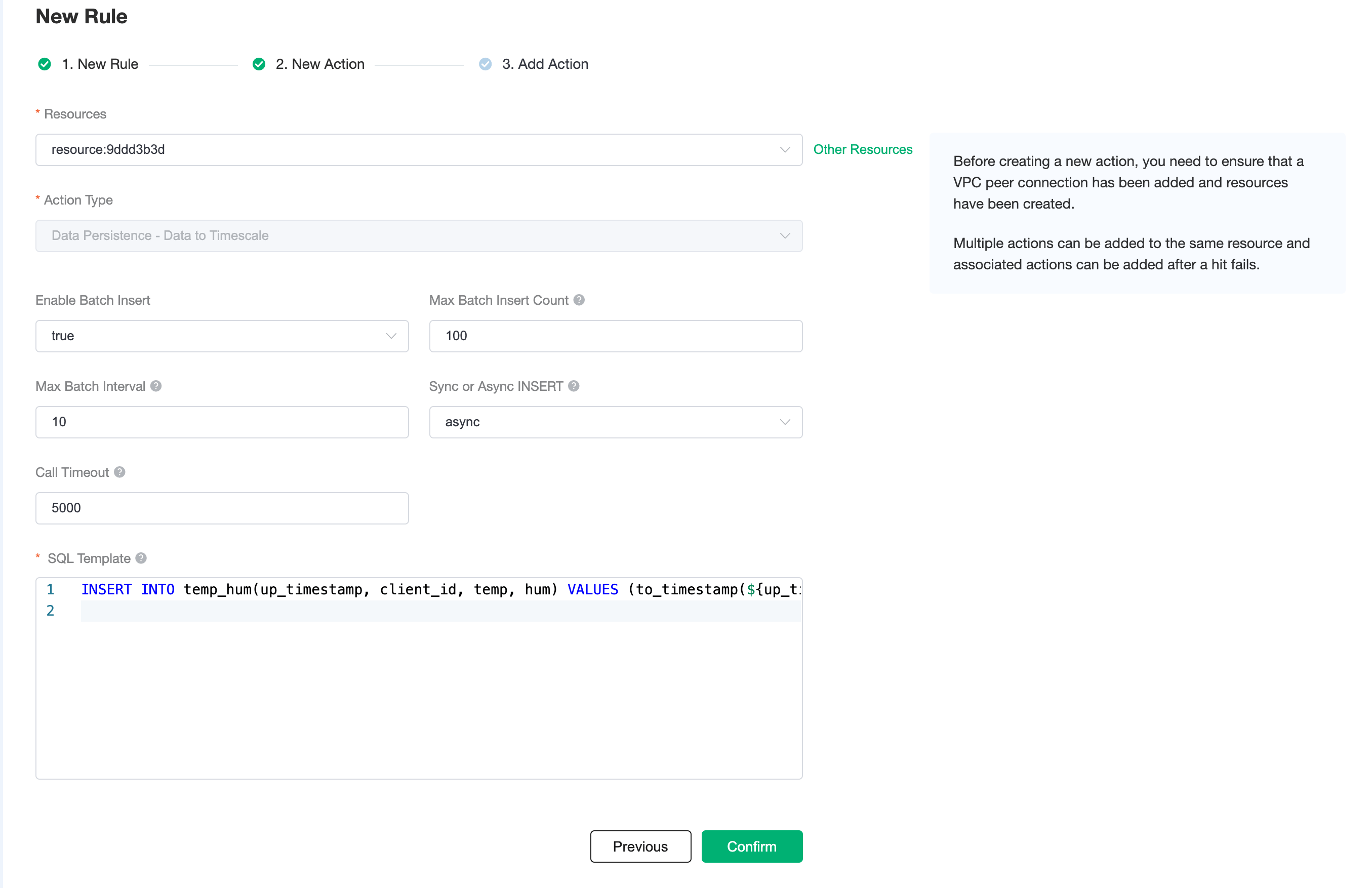 Click on
Click on Confirmto create action.View Resource Detail
Click on the resource to see the detail.
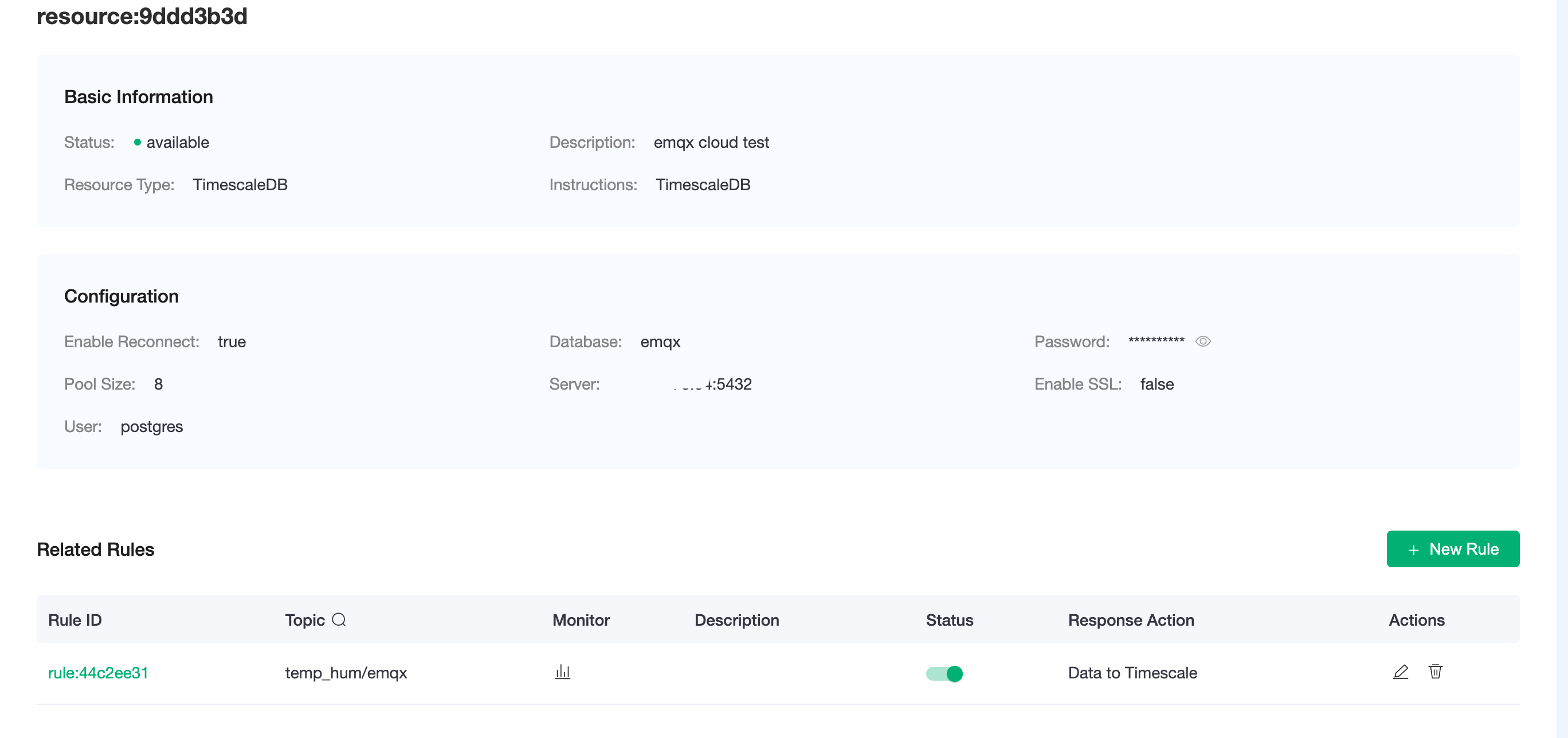
Check Rule Monitoring
Click the monitor icon of rule to see the metrics
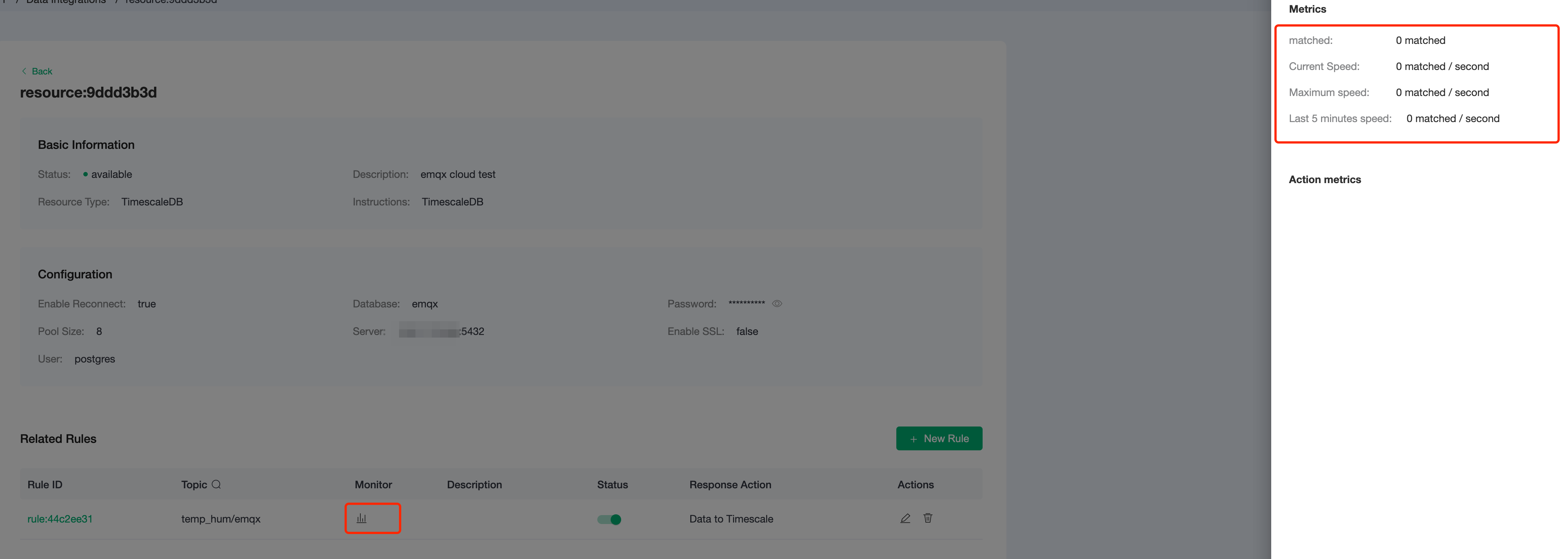
Test
Use MQTTX to simulate temperature and humidity data reporting
You need to replace broker.emqx.io with the created deployment connection address, and add client authentication information to the EMQX Dashboard.
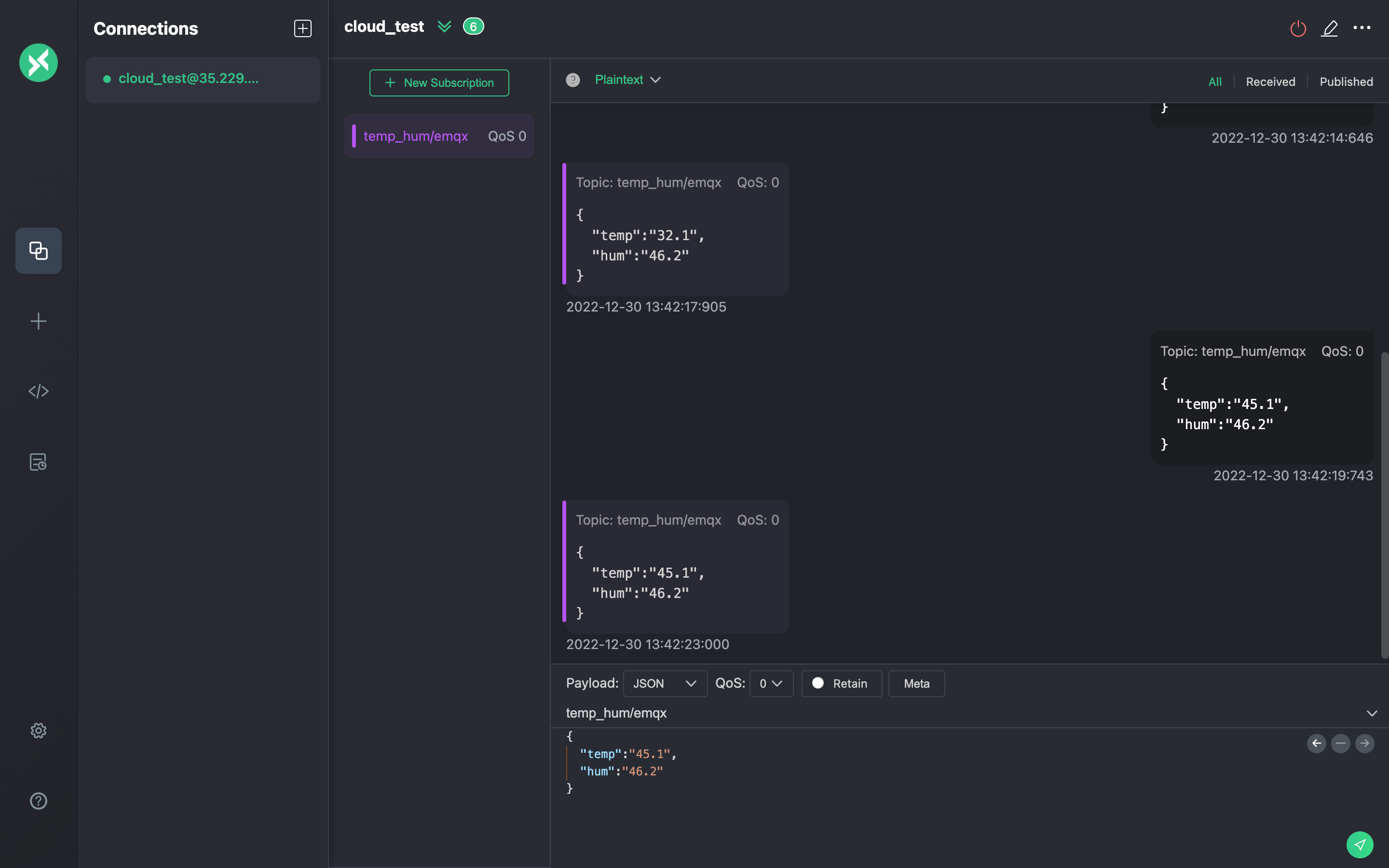
View data dump results
sqlselect * from temp_hum order by up_timestamp desc limit 10;